Big Game Equipment Roundup, Plus Air-fried Chicken Wings
It is that time of year when football is on America’s mind, and not just football in general: one football game in particular.
Whether you’re watching at home or going to a gathering, you’ll want to bring a Great Dish regardless of who’s in the Big Game. 2
With the Game still a couple weeks out, you still have time to get the gear you need for your Super Cook. Here, we’ll go over some of the instruments and tools you might need to score big at your party.
And, because you might not have decided what to make yet, we’re also throwing in a recipe for easy air-fried chicken wings. Ok, enough talk, let’s kick this thing off!
The Thermometer for everything

First and foremost, for almost any dish, verifying that it is properly done is essential and there’s no better thermometer in the world for verifying doneness than Thermapen® ONE.
Checking a brisket for both temperature and tenderness is a Thermapen job, as is checking ribs, verifying grilled chicken, or smoked sausages, or anything else. Full readings in ONE second mean you know the temps of your food—whether it’s fried, roasted, baked, or smoked—almost before you can finish thinking about what the thermometer says.
The speed, accuracy, and reliability of Thermapen can’t be beaten, and neither can the food you’ll make with it. It is literally a game-changer in the kitchen.
Best thermometer for deep frying
If you’re deep-frying anything for your home-gating, you need ChefAlarm®. ChefAlarm is, simply, the best deep-fry thermometer you can get. It has a high and low-temp alarm, so you can set your frying temperature window, which is essential! When you put food in oil to fry, it can lower the oil temperature drastically, which can lead to oil-logged, heavy, fried food. We don’t want that. We want light, crispy, wonderful fried foods! Knowing your oil temps allows you to better modulate the heat under your oil pot so that you can stay in your optimal temperature range.
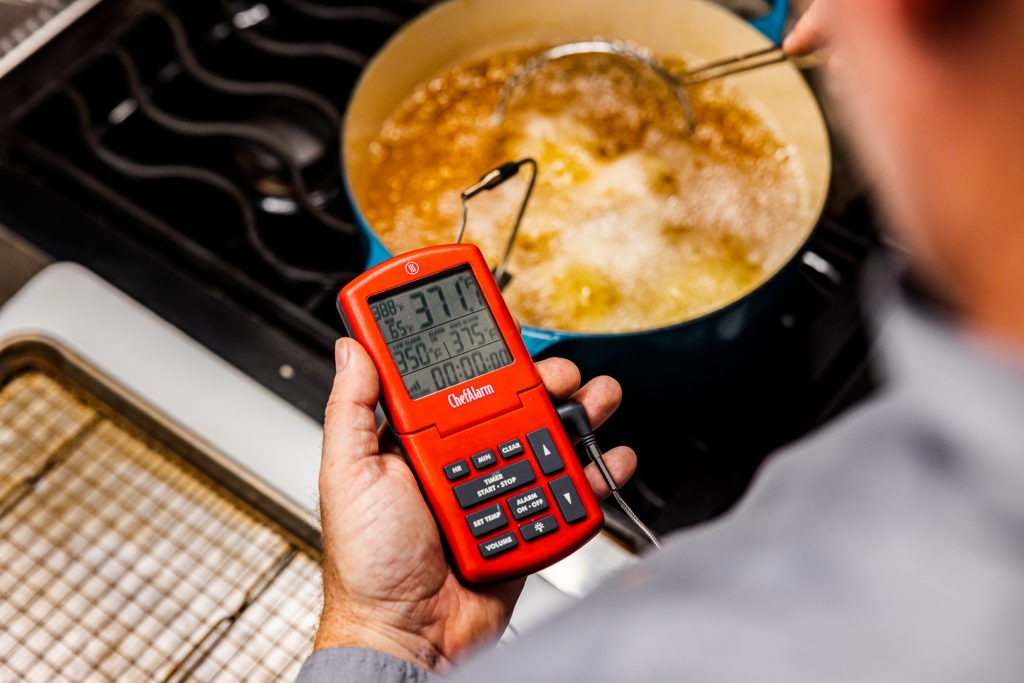
No matter if you’re frying cheese sticks or drumsticks, donuts or hushpuppies, you’ll need a ChefAlarm to keep track of your oil temperatures for the best results. (Oh, and the built-in timer doesn’t hurt a thing if you’re worried about getting distracted by the game while you’re frying!)
Baking thermometers
Making a loaf of cheesy pull-apart bread? Maybe you’re reverse-searing a whole pan of strip steaks? Oooh! How about some homemade soft pretzels with beer cheese? If you’re baking, the ability to track your oven temperature as well as your food temp can be crucial. SquareDOT® gives you two channels to work with, one for the oven and one for your food, plus it has a new averaging feature that allows you to check your oven (preferably well before your cook with the oven empty) to find out how far off from its stated mark it actually is. Once you know that, you can adjust the oven to cook where you mean to.
Then, once you have your oven properly squared away, you can also grab another probe and run two meat channels on your SquareDOT by turning the averaging function off.
Smoking thermometers
If you’re BBQing for the game, we’ve got you covered. We have temperature tools for every kind of smoking project and for every level of expertise.
Thermometers for pellet smokers
Smoking outside in the wintertime can use more pellets than you’re used to, so monitoring the air temp of your smoker can be even more important. A long-range Smoke X2™ can keep an eye on the air temp of your pellet smoker and beam you the info, even if your TV room is all the way on the other side of your house. If your smoker’s temp drops, the low-temp alarm will sound, and you can pour in more pellets before disaster strikes. Cook that slab of ribs with confidence even when you’re not standing right by the cooker.
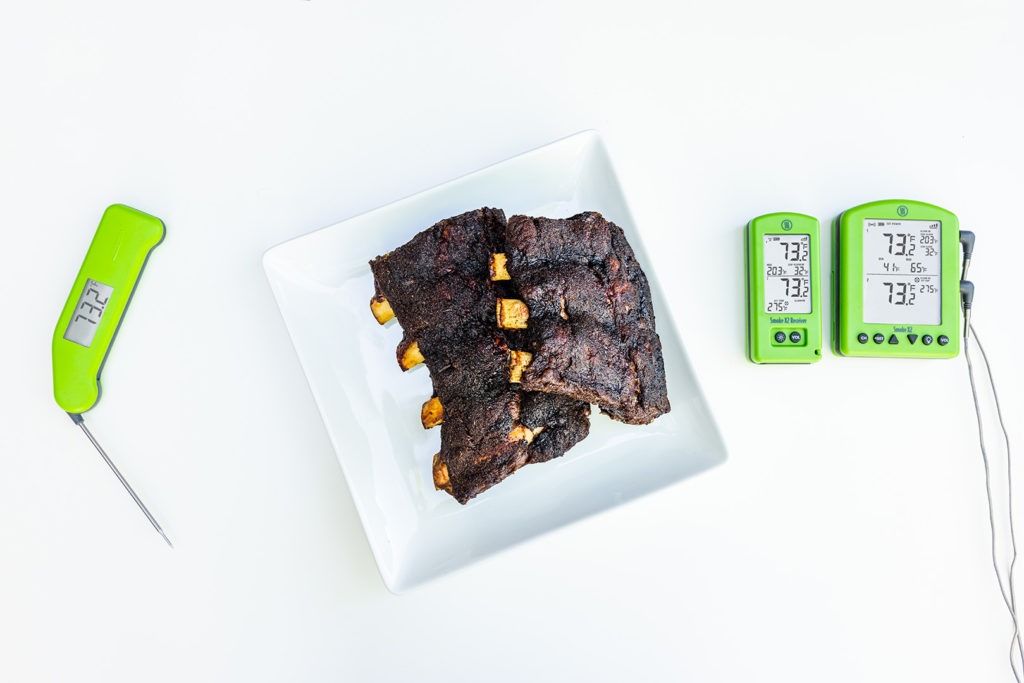
Tip: do have extra pellets on hand for any winter cooks!
Temperature tools for kamado smokers, stick burners, and others
Just because you’re not using a pellet cooker doesn’t mean you don’t need temperature monitoring! For the best results, all smokers need their pit temps monitored and all meats need their temperatures tracked.
Are you cooking a feast of ribs, chicken, and pulled pork? Pick up Signals™ or Smoke X4™, both of which have four channels, so you can watch each kind of meat individually and still monitor the pit temp. Signals is WiFi-enabled, so you can watch it through the cloud, while Smoke X4 has long-range, house-penetrating RF and a receiver. Both of them communicate with Billows™ BBQ control fan. If you’re going big, consider one of these.
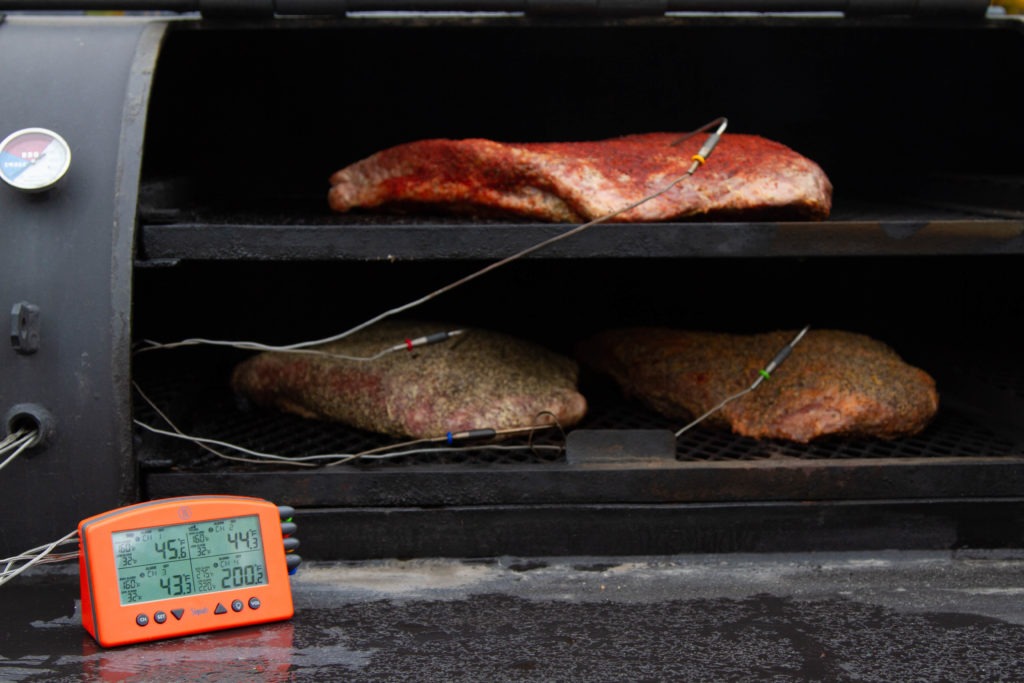
If you are cooking slightly less, consider Smoke™ or Smoke X2™. They both have two channels, one for the pit, one for the meat, and easy-to-use receivers. Smoke X2 works with Billows. Smoke has an optional Gateway to connect it to the cloud via WiFi, if you want that kind of tracking ability.
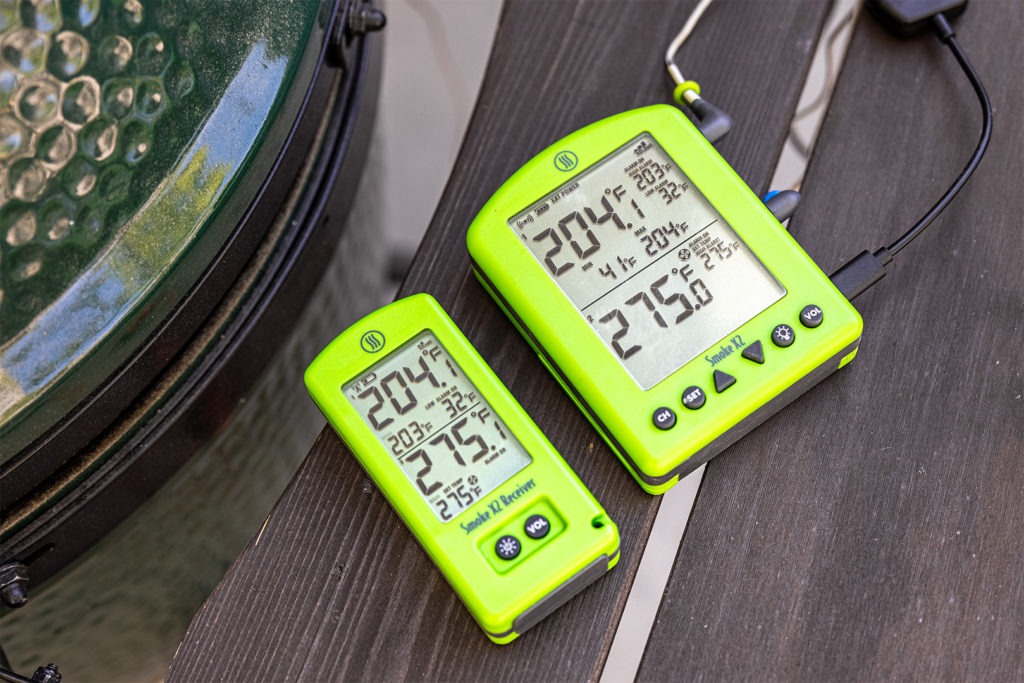
If having the most laboratory-grade, impressive piece of equipment is what you want, get ThermaQ2®, with high-accuracy Type-K thermocouple probes, 4 channels, and billows control, it’s for serious BBQers only.
BBQ control fans
If you’re running a Kamado, a stick burner, or even a kettle, a tool like Billows BBQ Control Fan can be indispensable. Pair it with a compatible thermometer and you can get pellet-smoker-like temperature control with the fuel of your choice. Billows gives your smoker just the right amount of air to keep it at the temperature you want, so you can tend to your guests and the game, not the fire.
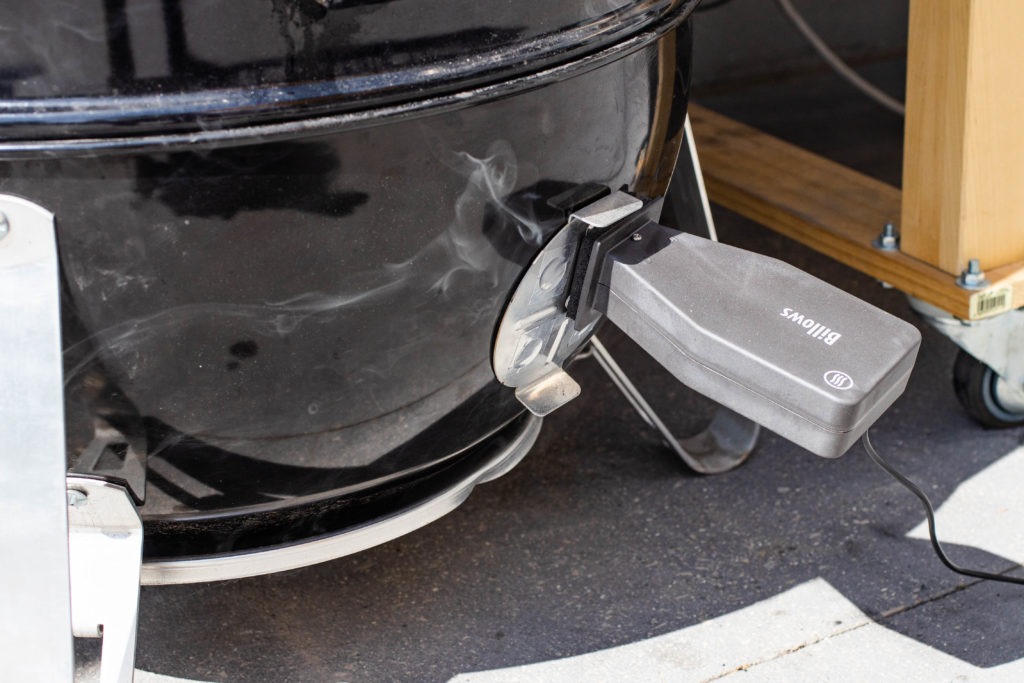
Get Billows (and the right mounting kit) for your smoker and enjoy the ease of modern BBQ!
Get some back-up probes
We make the best temperature probes in the industry. But all probes are, ultimately, consumables—much like lightbulbs—and you don’t want to be caught in the thermal dark without any spare probes if the game is riding on you. It’s always a good idea to have a couple of probes on hand, just in case a flare-up kills one, mid-cook. Pro-series® Probes are interchangeable, so the new 2.5″ overbraid needle probe will work in your Signals as well as it will in your SquareDot, as will all the others.
Don’t forget the extras
You have all your temperature tools taken care of. Great! But what about the rest of the cooking experience? We have some of those bases covered, too! Get a couple high-temp silicone spatulas for sauce making or mac-and-cheese; or a set of mini spatulas for cleaning the last bit of queso out of the jar.
Or grab some brushes to apply sauces to your smoking meats. Pick up a handful of trivets, which people seem to use for just about anything, from frisbees to heat mitigators in bread baking. (We like them best for, you know, being trivets, but who are we to judge?)
And to help with organization and storage, you can’t beat our magnetic probe spools. They’ll help keep all those probes nice and neat, and will even help prolong their life by preventing kinks.
Finally, airfried chicken wings
If you aren’t cooking for a whole pack, making wings in your air fryer is not a shabby way to go. Let’s be clear: it’s not frying anything; it’s a high-intensity convection cooker, but that doesn’t mean it doesn’t cook up some terrific, crisp-skinned wings!
We used a 2.5″ needle probe to temp these wings. It’s small enough to fit perfectly in a wing in the cooking basket of an air fryer. We wanted to know how done the wings were getting, and we found that the wings had no problem getting to a proper doneness. We plugged the probe into our ChefAlarm and stuck the sensor tip into our fattest wing, then set the high-temp alarm for 175°F (79°C), the minimum temperature for an enjoyable texture in a chicken wing.
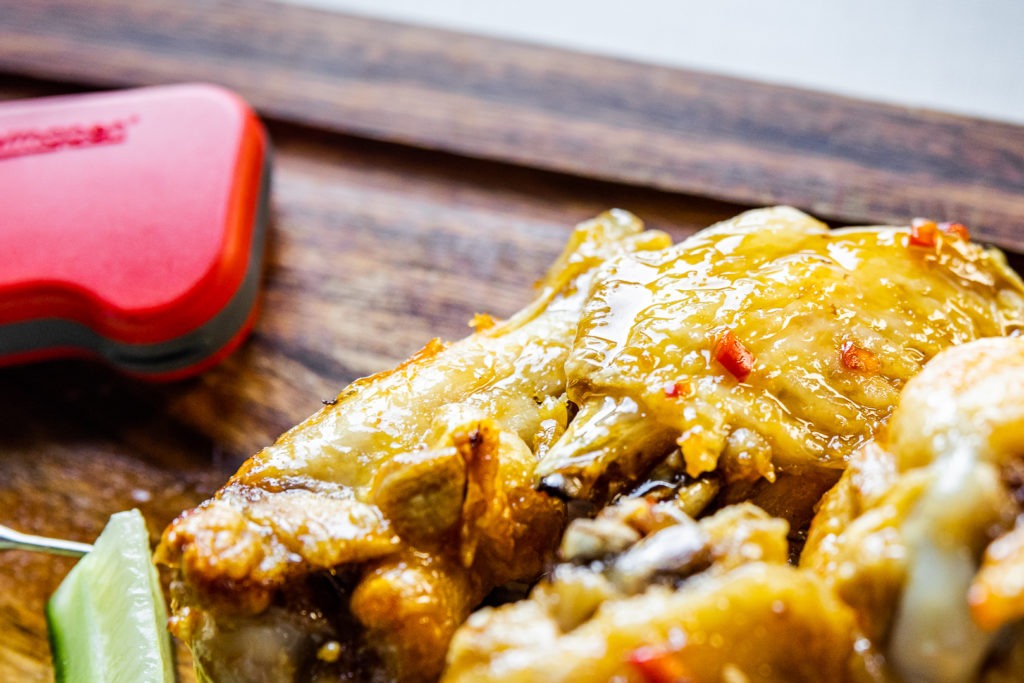
Well, we not only hit it but surpassed it. In fact, by the time our wings were done they had gotten up to about 205°F (96°C). We even verified that temp with our Thermapen ONE. Now, that is by no means too high a temp. Wings can handle those kinds of temps without difficulty because of their extra connective tissue. In fact, they’re delicious in the 200–210°F (93–99°C) range.
Because the chicken’s internal temp had risen so high by the time the skin crisped up, it’s probably pretty safe to assume that a crisp-skinned wing will also be a safe one—unless you put your wings in partially frozen. That being said, it never hurts to probe them, and you should always always verify doneness temps with your Thermapen.
We made this batch into sweet-honey teriyaki wings, but the sauce is up to you!
Whatever you make for your Big Game, make it right with thermal thinking and temperature management. You still have time to get the tools you need for the cook, so act now! Happy cooking, and happy watching!
Print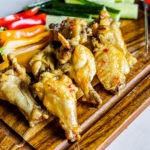
Air-fried Chicken Wings Recipe
Description
An easy recipe for air-fried chicken wings. This method isn’t particularly fast, but it is easy and it lets you think of other things while your wings cook.
Ingredients
- 3 lb chicken wings, well thawed
- 1 1/2 C good teriyaki sauce
- 1/4 C butter, cold, cut into cubes
- 1 Tbsp honey
- 1 Tbsp sriracha sauce
- 1 small red chili, chopped
Instructions
- Pat your wings dry. The drier the wings, the crisper the skin will be.
- Season the wings lightly with kosher salt.
- Spray the wings with a thin coating of non-stick cooking spray.
- Preheat your air fryer to 400°F (204°C). When it’s preheated, load the basket with wings according to the manufacturer’s instructions.
- Insert a 2.5″ needle probe, if you have one, into the thickest part of the largest wing. Set the high-temp alarm on your ChefAlarm for 175°F (79°C). (This is a minimum temperature, not an absolute pull temp.)
- Cook the wings for 8 minutes, skin side up.
- Prepare the sauce
- Heat the teriyaki and the chopped red chili in a small pot on the stove over medium-low heat until it reaches 110°F (43°C). Use your Thermapen ONE to monitor the temp. Remove from heat.
- Stir in the honey and sriracha. Whisk in the cold butter, adding it all at once.
- Set the sauce aside until ready to use.
- When the timer sounds, flip the wings and cook another 8 minutes. Adjust the probe if necessary.
- When that timer sounds, flip them again and cook for 3 more minutes with the skin up.
- Before removing the wings from the basket, verify the doneness with your Thermapen ONE. If you find any wings that, somehow, are not done, keep cooking them. They will all most likely be in the 200°F (93°C) range.
- Sauce the singe and enjoy them while the next batch cooks!
Shop now for products used in this post:
Did you know that a certain sports organization has copyrighted the name of that big game and they don’t let you use it on your company’s website unless you’re an official sponsor of the aforementioned Grand Platter? Now you know!↩
Did you know that a certain sports organization has copyrighted the name of that big game and they don’t let you use it on your company’s website unless you’re an official sponsor of the aforementioned Grand Platter? Now you know!↩


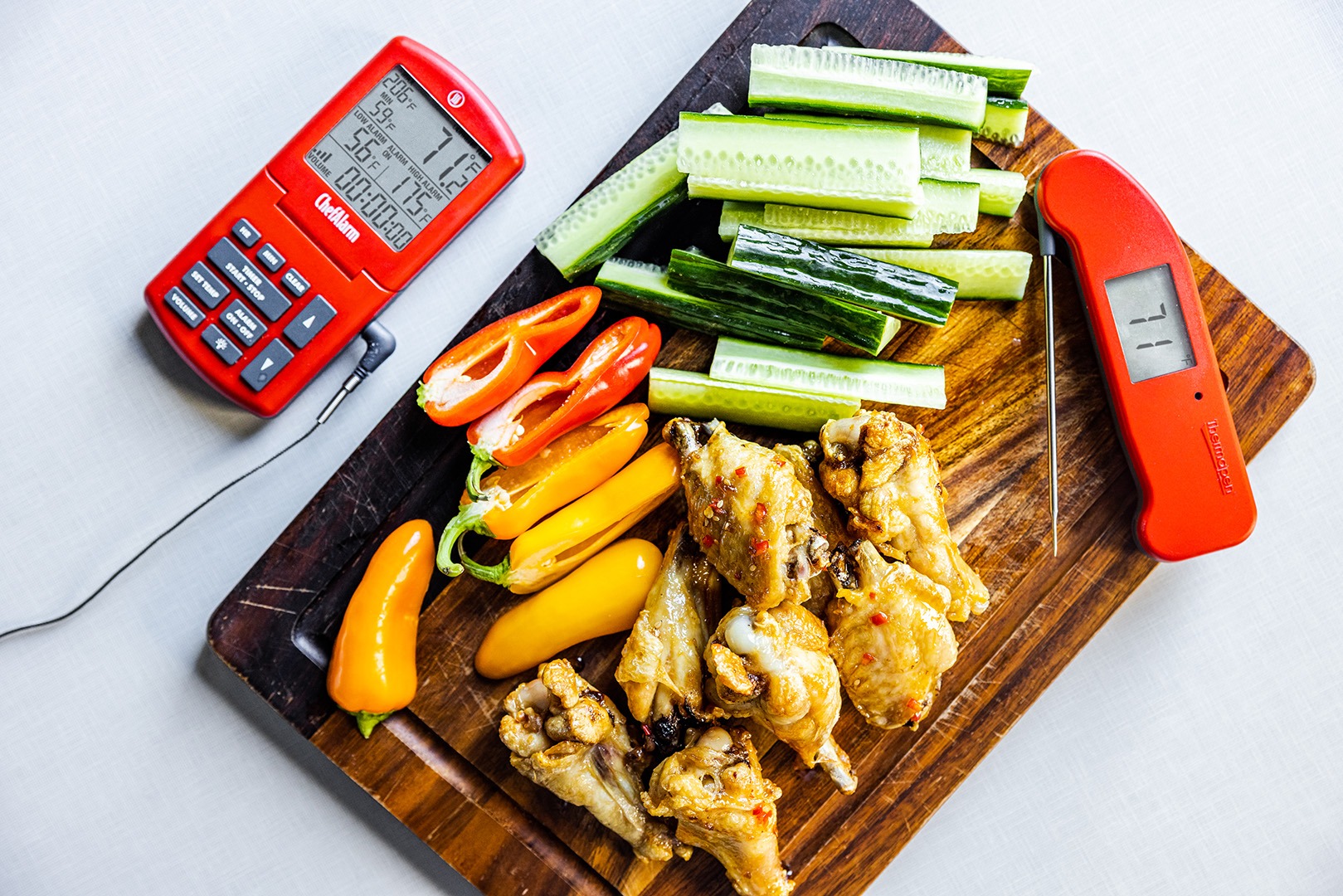
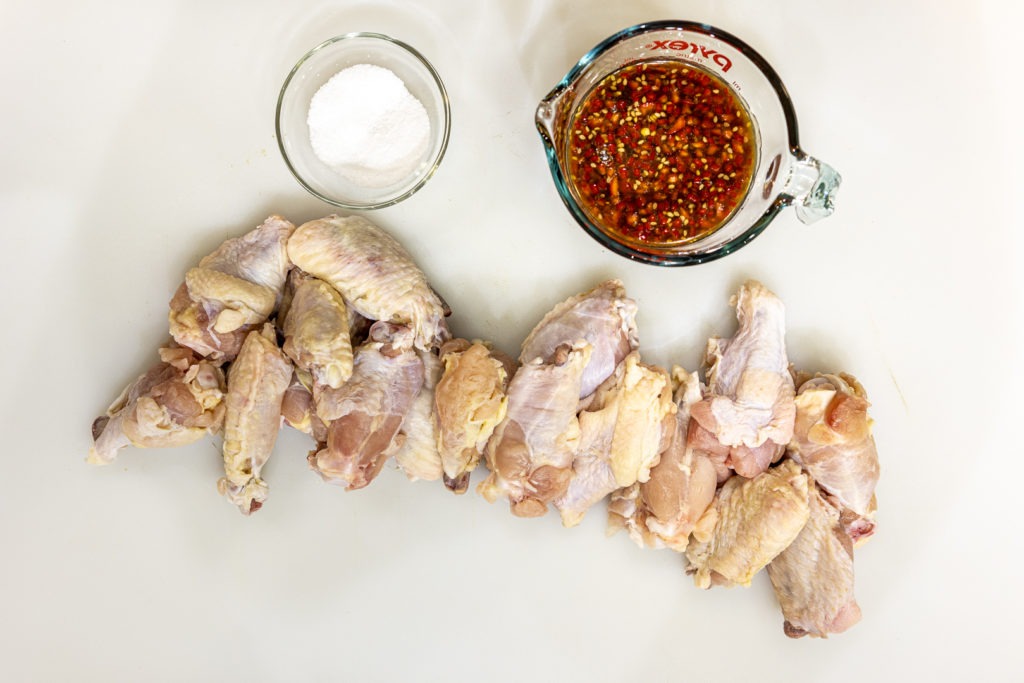
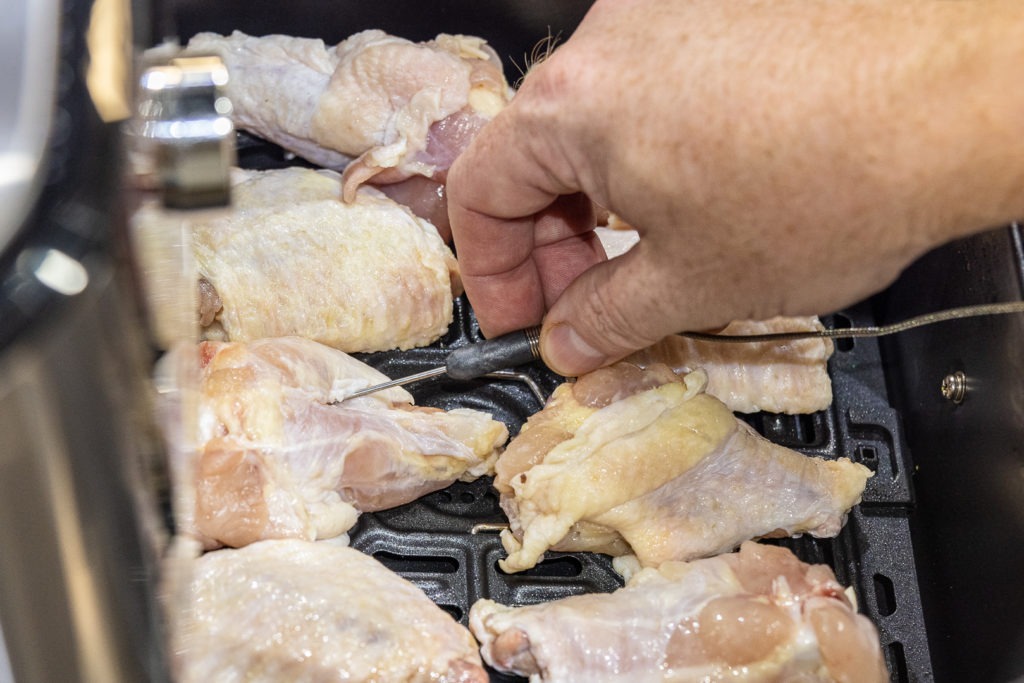
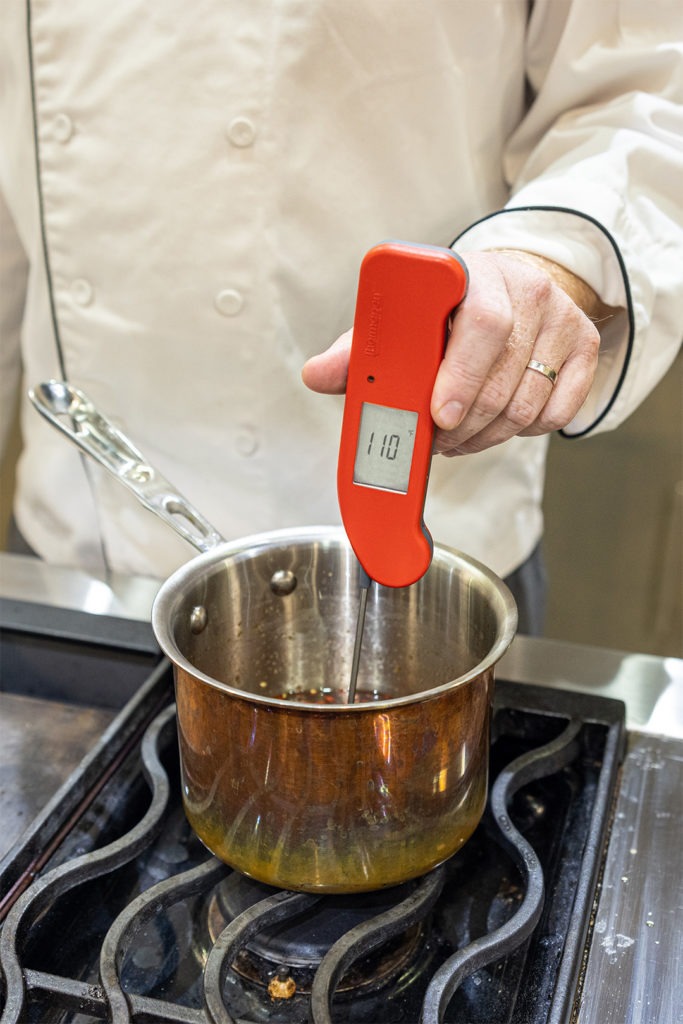
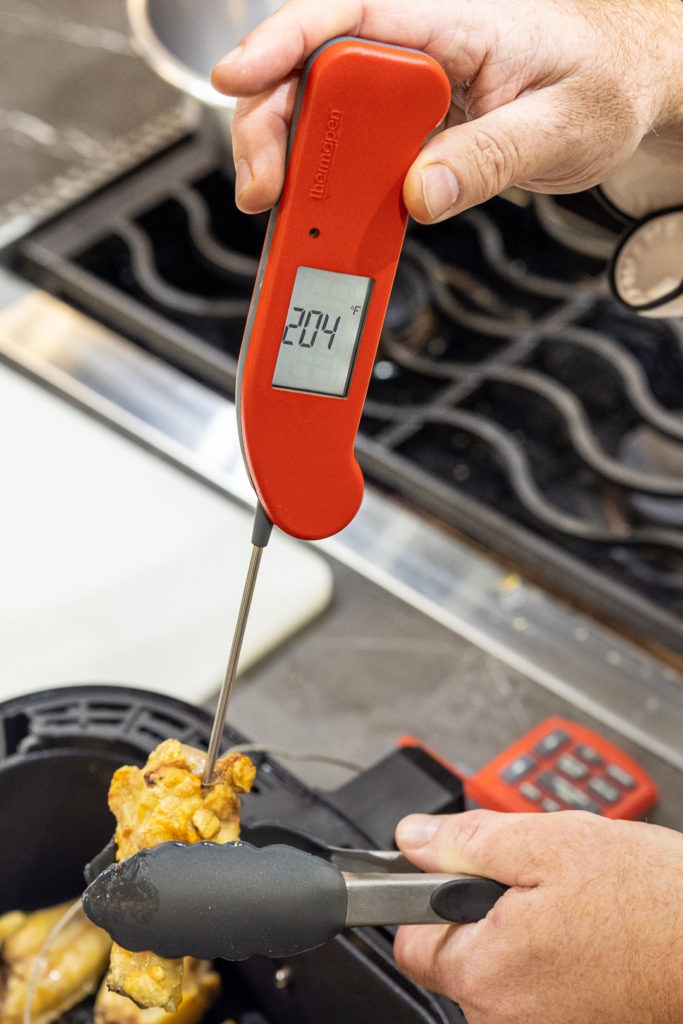
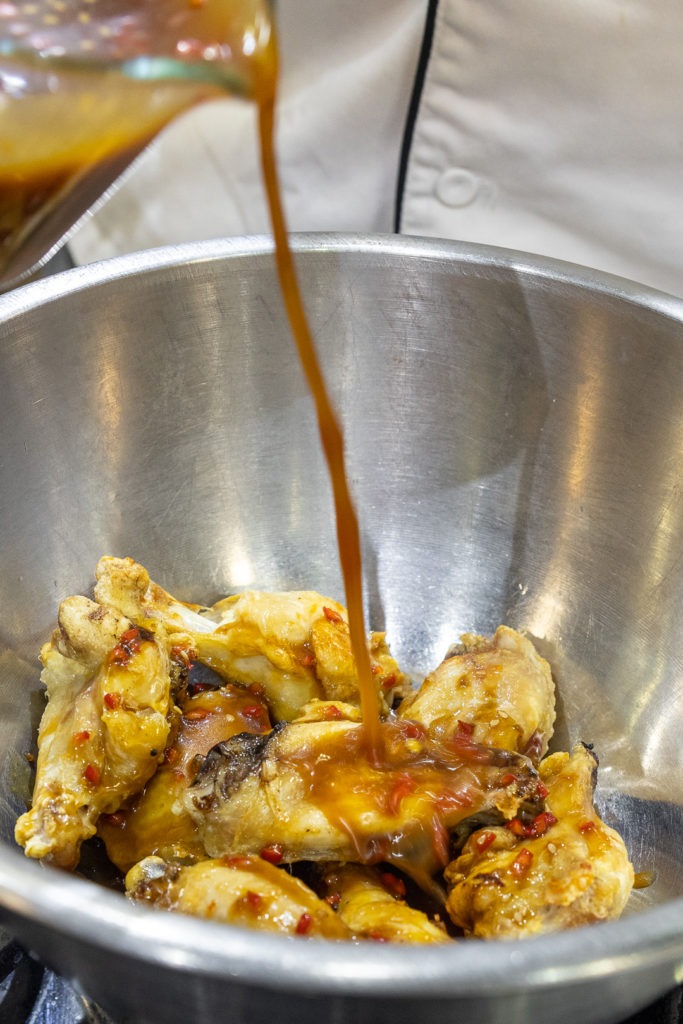
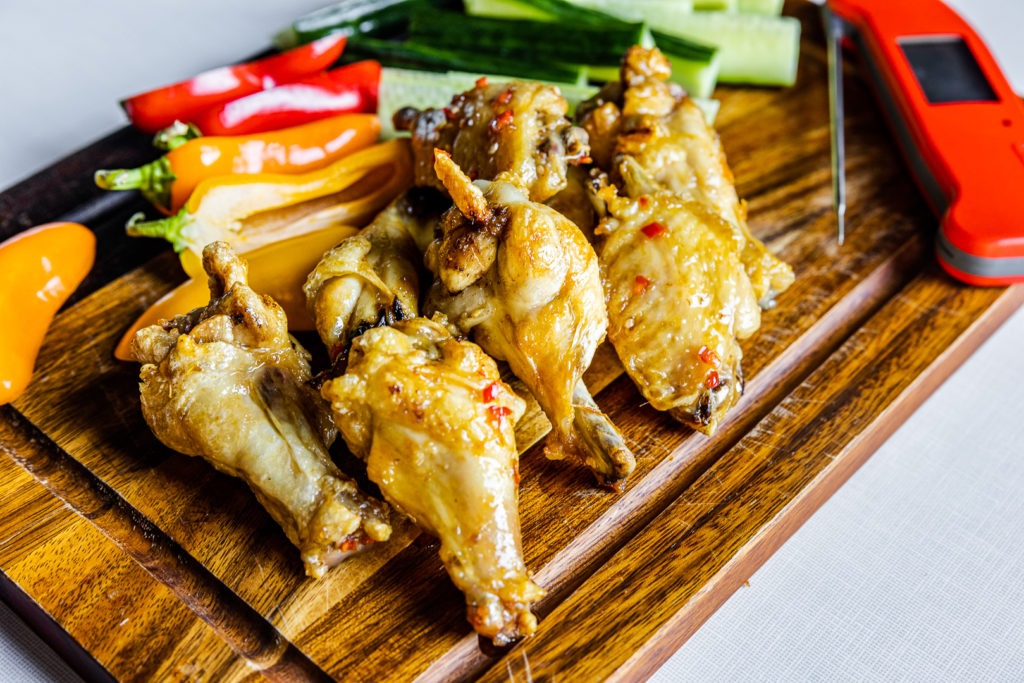



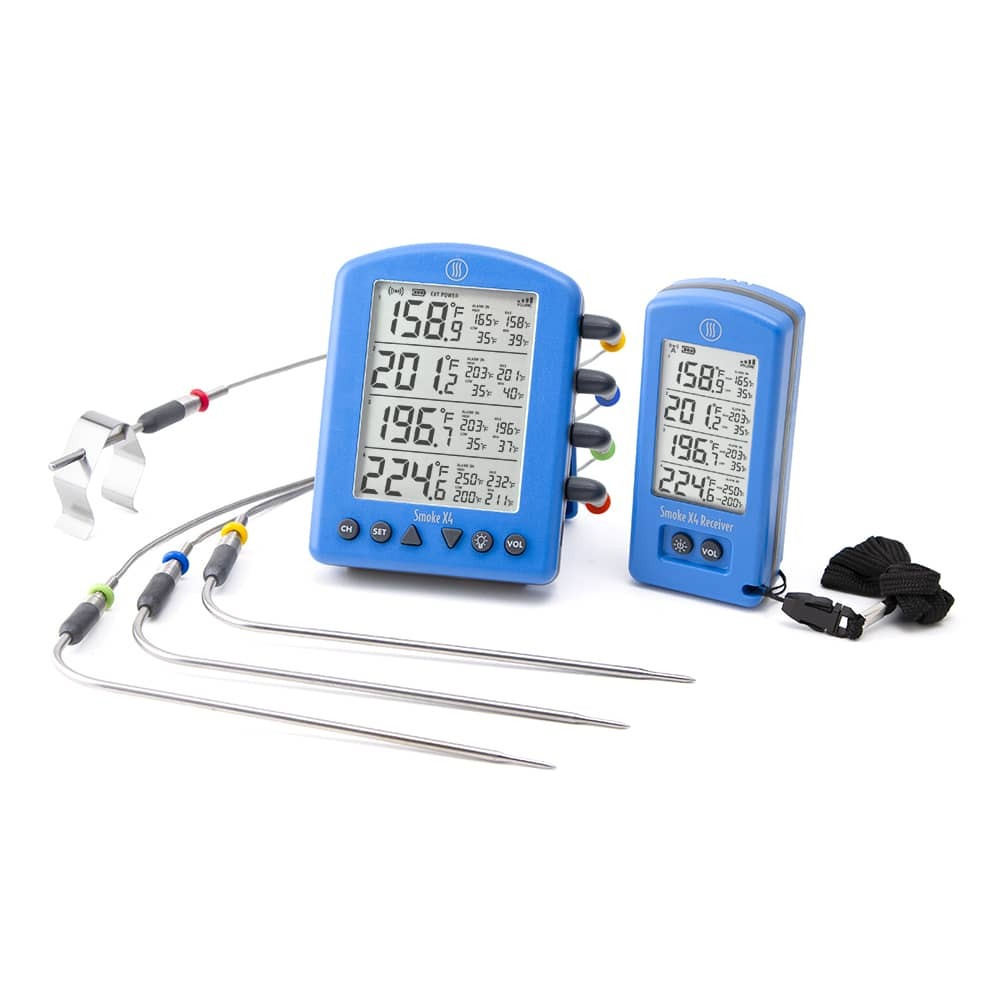
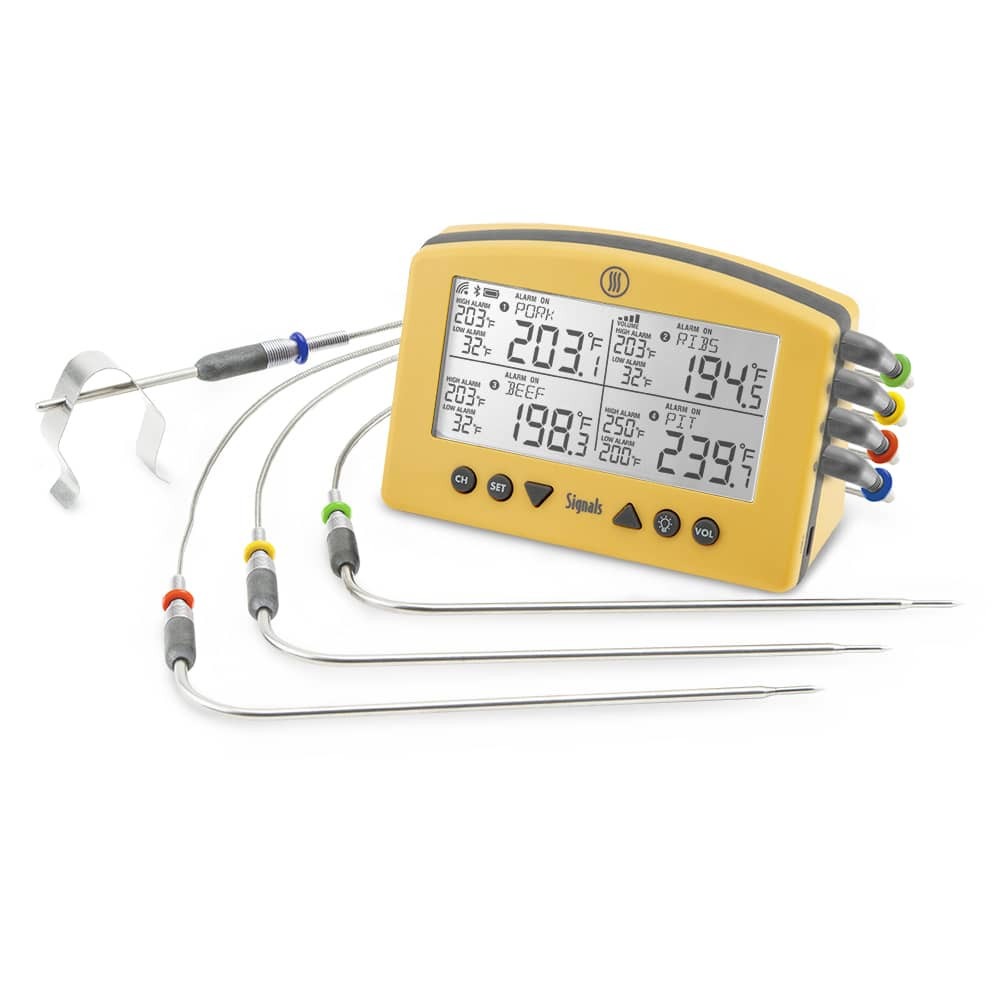
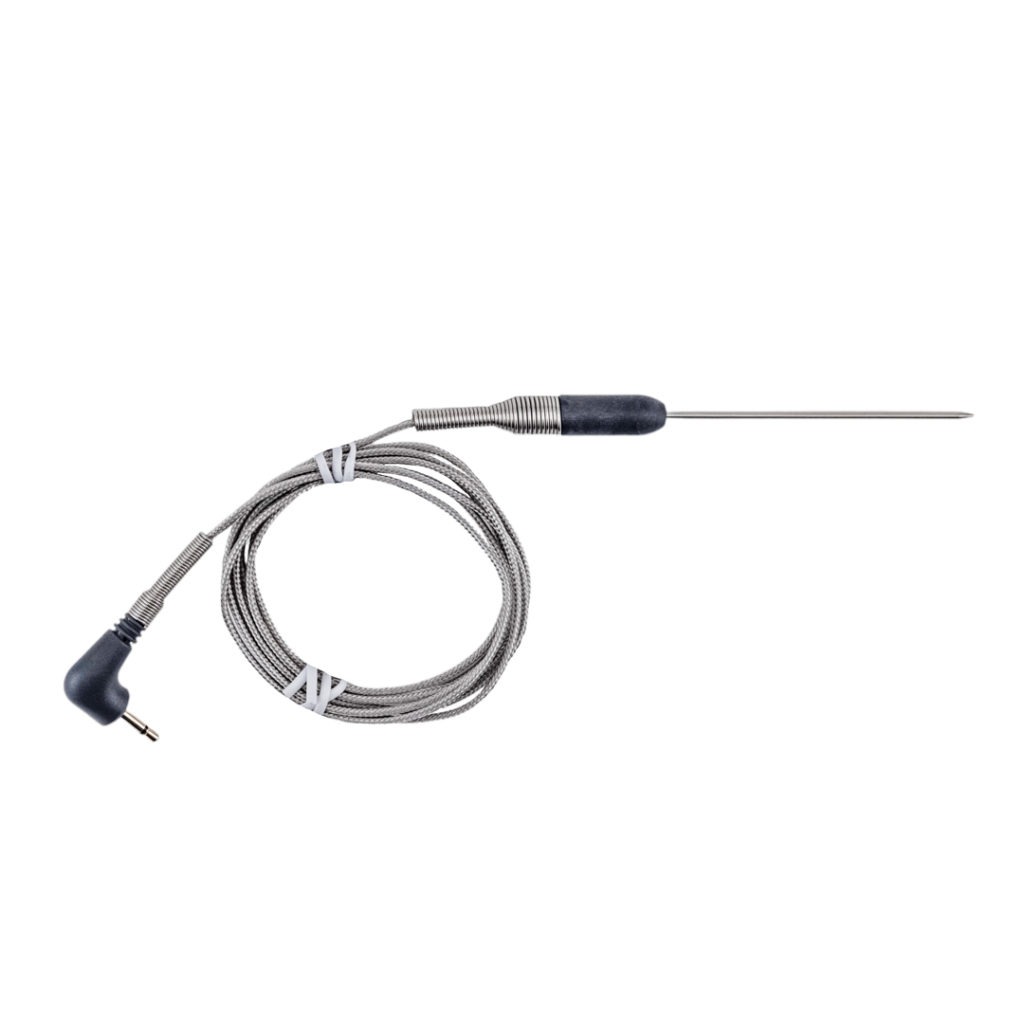
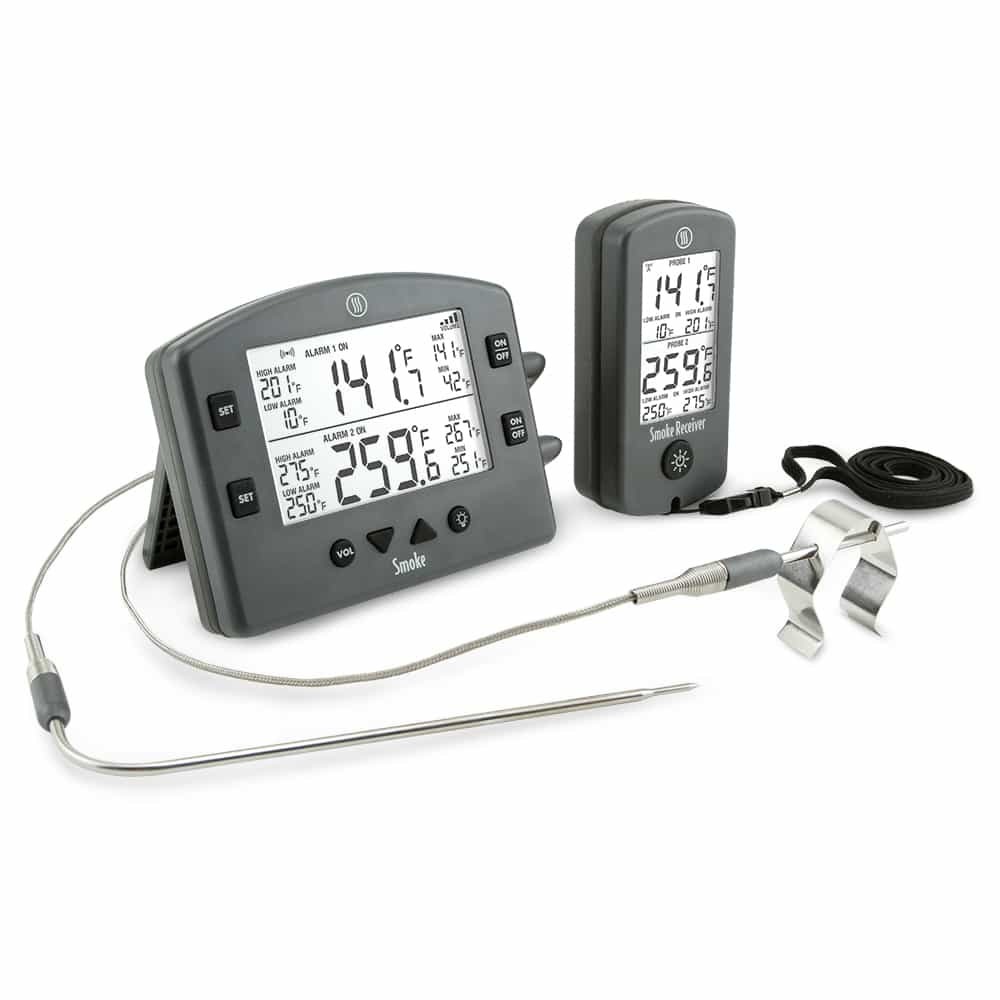
My two thermo-pens MK4 have stopped making a large sound.
Do you backup these devices?
Earl Rapp
Mr Rapp,
I’d give our Technical Support team a call, 1-800-393-6434.
OMG, you missed the important ingredient. BAKING POWDER!
“The slightly alkaline mixture raises the skin’s pH levels, which allows proteins to break down more efficiently, giving you crisper, more evenly browned results.” from Niki Achitoff-Gray.
And this from your blog on Smoked Wings.
Excellent point! It’s a great idea to add a little baking powder to your wings for crispness and browning!